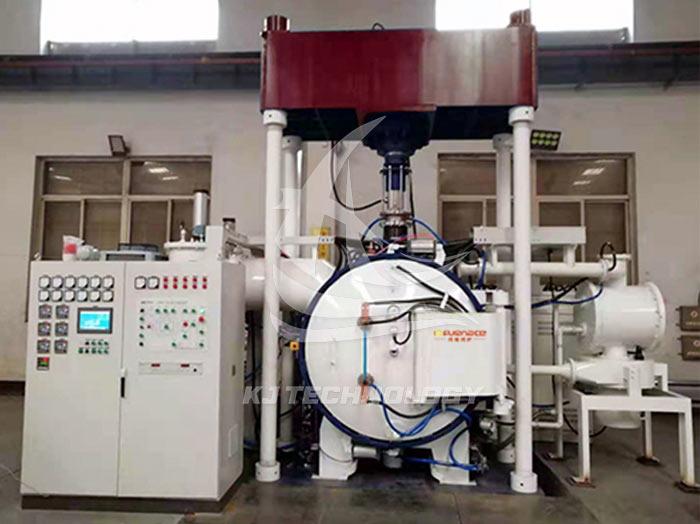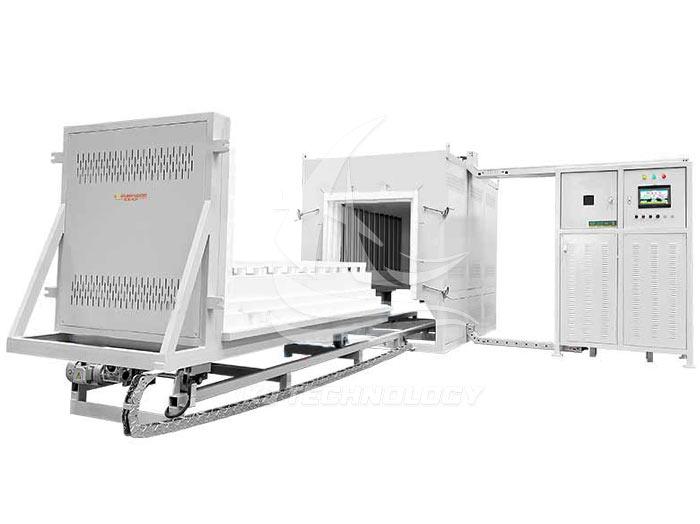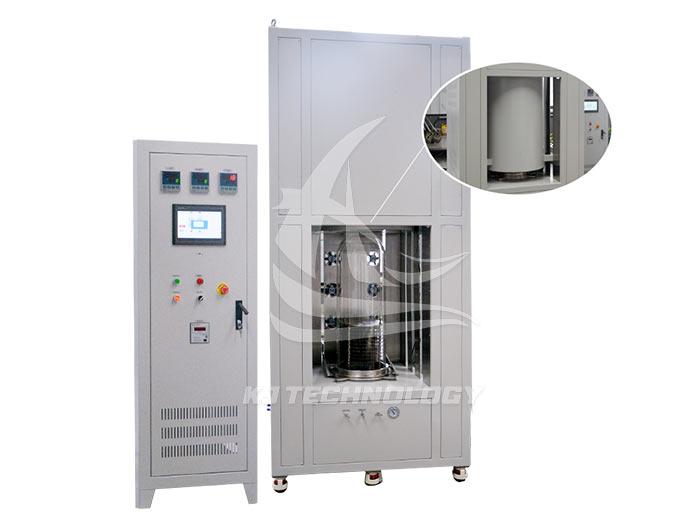Common faults and solutions for customized heat treatment vacuum furnaces
 06-16-2025 Author: KJ technology
06-16-2025 Author: KJ technology
The common faults and solutions for customized heat treatment vacuum furnaces are as follows:
Abnormal temperature
High temperature alarm
Reason: Abnormal temperature controller parameters, breakdown of solid-state relay output terminal, poor contact of thermocouple probe, etc.
Solution: Refer to the normal temperature controller to calibrate the parameters; After a power outage, use a multimeter to measure the resistance of the output terminal of the solid-state relay. If it is broken down, replace it; When powering on, gently shake the thermocouple probe. If the temperature controller shows a large jumping amplitude, replace the thermocouple.
The displayed temperature is too low to reach the set value
Reason: Abnormal temperature controller parameters or no output signal, damaged thermocouple, heating tube not working properly, circuit failure, etc.
Solution: Verify the parameters of the thermostat; Swap the thermocouple with the normal temperature controller, observe the temperature display, and replace it if it is damaged; After powering on, start heating and test the wires connected to the heating tube with a test pen. If there is electricity, measure the current with a clamp meter. If there is a large difference, check the circuit.
Vacuum anomaly
Insufficient vacuum degree
Reason: Vacuum pump malfunction or performance degradation, vacuum pipeline leakage, aging or damage of seals, residual gas or pollutants in the furnace body or pipeline.
Solution: Check the working status of the vacuum pump and repair or replace it if necessary; Check the connection parts of the vacuum pipeline, use a leak detector to locate and repair the leakage points; Thoroughly clean and degas the furnace body and pipelines.
Vacuum cannot be drawn up or is too low
Reason: Abnormal vacuum gas source and compression pressure, vacuum gauge malfunction, poor sealing of furnace door, leakage in pipelines or pneumatic valves, etc.
Solution: Confirm if the vacuum source and compressed air pressure are normal, and check if the vacuum gauge is in good condition; Check if the furnace door is tightly closed, if the sealing film is damaged or deformed, and if there are any foreign objects on the door panel; Check the pipes, pneumatic valves, thermocouple inlet and other positions in the corresponding work area. If there is a leak at the thermocouple inlet, re seal it with AB glue.
Mechanical structural failure
The furnace door cannot be opened or closed normally
Reason: Aging or damage of the furnace door sealing ring, mismatch between the furnace door sealing ring and the furnace body, loosening of the furnace door hinge, deformation of the buckle, deformation of the door panel, etc.
Solution: Replace the aging or damaged furnace door sealing ring; Check and repair the mechanical components of the furnace door to ensure its normal operation; Ensure that the sealing ring of the furnace door matches well with the furnace body, and adjust it if necessary.
The fan has abnormal noise
Reason: Foreign objects have entered the impeller of the fan, and the screws fixing the motor are loose.
Solution: Carefully inspect the fan rotor and remove foreign objects; Tighten the screws that secure the motor.
Pneumatic valve cannot operate
Reason: The solenoid valve cannot work properly, the compressed air pressure does not meet the working requirements, and the pneumatic valve itself is damaged.
Solution: Check whether the solenoid valve can work normally and whether the compressed air pressure meets the working requirements; If the air pressure is normal and the solenoid valve is in good condition, replace the pneumatic valve.
Electrical component malfunction
Solid state relay malfunction
Reason: The output terminal is broken down.
Solution: After a power outage, use a multimeter to measure the resistance at the output terminal of the solid-state relay. If it is broken down, replace it with a new one of the same model.
Other electrical components are aging and damaged
Reason: Aging of components such as relays and contactors.
Solution: Regularly check the electrical control system, replace easily aging electrical components, and use high-quality and stable electrical components.
Control system software malfunction
Reason: Software program issue.
Solution: Update or reload the control system software to ensure that all programs comply with the latest operating standards; Regularly perform system backups.








